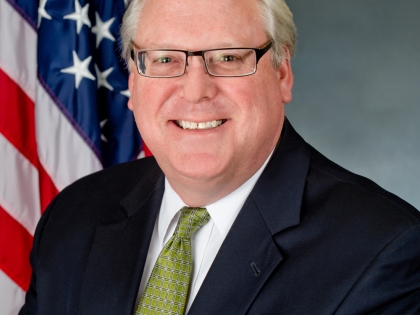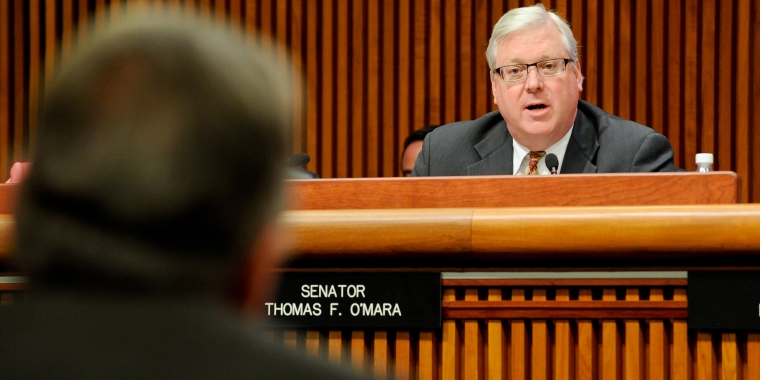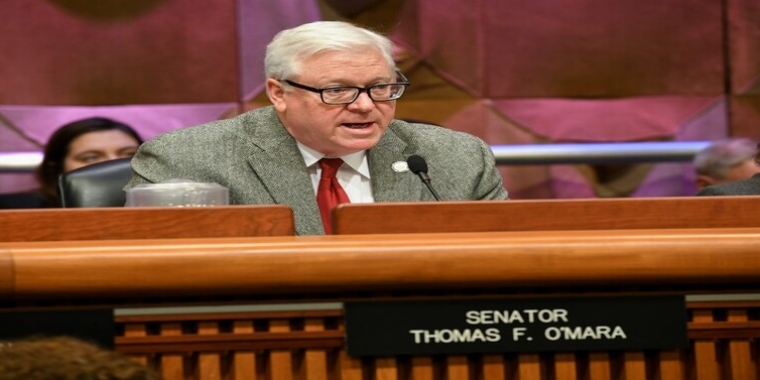
Senate unanimously approves O'Mara legislation to create paint recycling program, remove costly local burden ~ O'Mara points to it as example of government-industry cooperation on important environmental concerns ~ Calls for Assembly action
Thomas F. O'Mara
June 19, 2015
-
ISSUE:
- Environment

Albany, N.Y., June 19—The New York State Senate has approved legislation sponsored by Senator Tom O’Mara (R,I,C-Big Flats), chairman of the Senate Environmental Conservation Committee, to establish an industry-sponsored “Paint Stewardship Program” to reduce a costly burden on local governments and taxpayers who are currently responsible for collecting and disposing of most post-consumer paint, create local jobs, and encourage environmentally sound recycling and disposal of unused paint in New York State.
The legislation (S.4926/A.6199) was unanimously approved by the Senate last night. The measure is sponsored by Assemblyman Al Stirpe (D-Syracuse) and is currently in the Assembly Environmental Conservation Committee.
Today, O’Mara called on the Assembly Democratic leadership to also approve the important environmental legislation so it can be signed into law by Governor Andrew Cuomo.
O’Mara pointed to the legislation as an example of how government and industry can work together to implement effective environmental policies and programs.
“This legislation exemplifies how much we can accomplish by working together with industry on important environmental concerns. Working together, rather than cramming unreasonable demands down the throat of industry, helps give New York State a more business-friendly environment and actually results in better, more workable laws. This type of cooperation will go a long ways on reaching an end result on other important issues such as microbeads and child products. The New York State Assembly continues to demonstrate an unwillingness to work with business on this and many other issues that would benefit our state fiscally, economically and environmentally.”
The national Product Stewardship Institute (www.productstewarship.us) estimates that approximately 3.1 million gallons of paint go unused each year in New York State -- with the costs of collecting and managing the paint’s disposal mostly falling on local governments.
Under O’Mara’s legislation, through which paint manufacturers would be responsible for managing the recycling and disposal of unused paint, local governments would save approximately $25 million annually.
The measure has drawn the support of a range of environmental advocacy organizations, paint industry representatives, and municipal agencies, including the: Environmental Advocates of New York; Onondaga County Resource Recovery Agency; Madison County Department of Solid Waste & Sanitation; American Coatings Association; New York Product Stewardship Council; Citizens Campaign for the Environment; and the National Resources Defense Council.
The legislation was also cited as a priority bill by the joint, bipartisan New York State Caucus of Environmental Legislators.
In addition to reduced costs on local taxpayers, O’Mara said, a Paint Stewardship Program will create convenient recycling opportunities and green sector jobs, reduce disposal in favor of recycling, and result in less waste as consumers will become smarter and more efficient shoppers for paint.
The legislation directs the state Department of Environmental Conservation (DEC) to develop a plan for paint manufacturers and sellers to form and cover the costs of a statewide, not-for-profit Paint Stewardship Program that will minimize the involvement of local governments in the management of post-consumer paint by reducing its generation and establishing agreements to collect, transport, reuse, recycle, and/or burn for energy recovery post-consumer paint at appropriately licensed collection sites and facilities using environmentally sound management practices. The measure further specifies that the plan include details on annual program audits and reports, education and outreach to consumers, and how the post-consumer paint will be collected, treated, stored, transported and disposed.
States that have implemented comparable programs are showing impressive results. Oregon has collected and recycled over 1,000,000 gallons of paint since its program was implemented in July 2010. California launched its program in 2012 and has over 350 new collection locations accepting paint for recycling.
Share this Article or Press Release
Newsroom
Go to Newsroom


